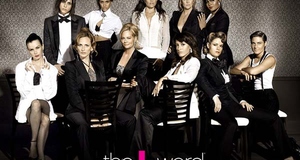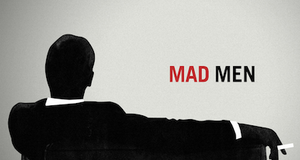"Lesbianing together:" Images of Incarcerated Women in Orange is the New Black
By
2022, Vol. 14 No. 03 | pg. 1/1
IN THIS ARTICLE
KEYWORDS
AbstractUsing content analysis, this article focuses on the portrayal of female prisoners in the first two seasons of the Netflix show Orange is the New Black (OITNB). There are two main findings. First, the word "lesbian" frequently signals homophobia rather than a self-claimed sexual identity. That is, the word "lesbian" primarily appears in scenes that highlight various characters' homophobia. Throughout the first and second seasons of the show, the scriptwriters show no mercy to homophobic characters, a characteristic of the show that differentiates it from earlier women-in-prison novels and media. Overwhelmingly, when characters describe same-sex desire and claim it as an identity, they use the word "gay." The second finding of this project is that female nudity and sex scenes between women (with the exception of the main character's same-sex relationship) play very little part in the central story arcs. Additionally, homosexual sex scenes are significantly more graphic than the heterosexual sex scenes. The second finding indicates that OITNB carries on the longstanding tradition of media portrayals of incarcerated women relying on sexual imagery for entertainment, often at the expense of addressing the realities of prison life. Given the critical acclaim OITNB received for its well-developed characters and sharp dialogue, using female nudity for entertainment purposes may be a practice so deeply embedded into portrayals of women in prison that it is inescapable. IntroductionThis article examines the portrayal of female prisoners in the Netflix show, Orange is the New Black (OITNB). OITNB is an original Netflix series that premiered in 2013 and was based off of the novel of the same name by Piper Kerman (Kerman, 2007). The series centers on the female protagonist character, Piper Chapman, and her struggle to adjust to her new life in a women’s correctional facility in Central New York. Sent to jail on a minor drug charge, Chapman must now face the realities of this prison and learn the ins-and-outs of her new life.OITNB is one of two fictional television programs in the United States set in a women's prison. The other program, Women in Prison, only lasted one season and aired from October 11, 1987 to April 2, 1988. OITNB has already surpassed its predecessor, gaining an audience numbering in the millions. Additionally, a number of the cast and crew have won awards (including three Emmy awards) for their portrayals and contributions to this production. One of the qualities the show is most often lauded for is its realistic portrayal of life in a women's prison. As one reviewer stated, "For all its daffy, dirty ways, 'Orange Is the New Black' is more strongly rooted in the real world. Like 'The Wire,' it intends to illuminate injustice by using stories so bright that you can’t ignore them" (Nussbaum, 2014). The bulk of the research on media portrayals of female prisoners focuses on movies and literature, because for a long time, these were the only forms of media addressing women's experiences in prison. Only a handful of television programs over the last 30 years focused on incarcerated women. Most of these echo their movie counterparts with a focus on sexuality at the expense of other important issues (Wilson and O'Sullivan, 2004). The only other television program focused on women's prisons that had as much (or more) success as OITNB is the UK series Bad Girls. Running from 1999 to 2006, the show attracted more than eight million viewers at its peak popularity. Like OITNB, Bad Girls featured a large ensemble cast and the plotlines took place almost entirely inside a fictional prison (HMP Larkhill). Bad Girls also earned praise for its realistic portrayal of issues in prison and did "more than any other prison drama to advance the cause of penal reform" because it highlighted, at least occasionally, real problems in the organization of prisons and suggested potential solutions (Wilson and O'Sullivan, 2004, p. 135). Despite that, Bad Girls, like other fictional portrayals of women in prison, focuses on the on-again, off-again relationship between one of the prisoners and a putatively heterosexual female staff member. The women-in-prison (WIP) narrative first emerges in pulp novels in the 1920s and 1930s. Not until the middle part of the century, however, was the WIP narrative firmly established in both novels and films (Ciasullo, 2008). By the 1970s, the novels and films follow a clear set of genre rules. These rules essentially encourage people to view these novels and films as soft porn (Rafter, 2006). Early on, authors in the genre established the character of the prison lesbian (Ciasullo, 2008). This butch character is almost always masculine (in appearance and aggressiveness) and incorrigible (and therefore often punished by the end of the story with death or continued incarceration). Within the fictional works focused on WIPs, the prison lesbian serves as a foil for the straight heroine entering prison for the first time. Though the prison lesbian often seduces or threatens the straight heroine into engaging in homosexual sex, the heroine inevitably returns to a heterosexual relationship by the end of the book (and later, the movie). Freedman (1996) argues the prison lesbian character became such a central part of WIP stories because it reflected the anxieties of prison staff in the real world. Having ignored homosexuality in prisons for decades, prison wardens and staff became increasingly concerned with lesbian activity in women's prisons in the 1940s and 1950s. In the first half of the twentieth century, what little attention prison staff paid to homosexuality focused on "masculine and aggressive" black lesbians, the deviant individuals leading "normal" white women astray (Freedman, 1996, p. 399). The cultural shifts resulting from WWII, especially the anxiety about the number of women who worked during the war, expanded these anxieties about "real" lesbians, who were aggressive and unsalvageable, to include working-class white women (Freedman, 1996). Thus the racial tie became less central over time, but the threat that "real" lesbians (of any race) posed to the prison’s social order remained a central concern of criminologists and prison officials (Freedman, 1996). In this way, the WIP genre developed alongside and as a reflection of larger cultural anxieties about women's social and sexual deviance. The United States currently has the highest prison population in the world. It was the creation of mandatory minimum drug laws during the 1980s and 1990s, at both the state and federal level, which primarily drove the spike in the incarceration rate (Alexander, 2010). While women still remained a minority in the prison system overall, women's incarceration rate increased faster than men's during that period. Between 1980 and 2010, women's incarceration rate increased 646 percent as compared to the 419 percent increase for men (Sentencing Project, 2012). The number of women incarcerated for a drug offense doubled between 1986 and 2014, jumping from 12 percent to 24 percent (Sentencing Project, 2015). Like their male counterparts, women in prison are more likely to be racial minorities. Because more women are entering and leaving the prison system than ever before, it is important to understand how various media portray life in women's prisons (Freedman, 1996). Media portrayals form and reflect our understanding of social issues and the ways that film and television often gloss over the reality of prisoners' lives makes it easier to ignore the shocking enormity of the US prison population and the conditions in which most prisoners live (Wilson and O'Sullivan, 2004), Chesney-Lind and Eliason (2006) examine media coverage of women in prison in the era of mass incarceration, when drug laws amplified the incarceration rates. They argue the rise in the arrest and imprisonment of women sparked off a media frenzy in the news that was, in actuality, a backlash against the feminist movement. Much of this sensationalized coverage of female criminals in the 1990s posited that the "dark side" of the feminist movement meant that women were also pursuing equality in the criminal underworld. The media portrayed these "bad girls" as more violent than previous generations of women, though recent research indicates that this was not the case (Stevens, Morash, and Chesney-Lind, 2011). Though Chesney-Lind and Eliason (2006) primarily focus on news media coverage rather than overtly fictional depictions of women in prison, their argument draws on the longstanding practice of using accounts of women in prison to highlight the negative consequences for women who have no men in their lives. Indeed, the prison boom in the late 20th century made it easier to expand the longstanding belief that female offenders were inherently masculine, violent, and sexually aggressive. OITNB tangles with nearly all of the tropes of women in prison, effectively turning many of them on their heads in an entertaining way. When it comes to addressing homosexuality in prison, the plot arcs of OITNB both rely on the titillating entertainment value of female same-sex desire, a classic convention of WIP movies and television, while also directly addressing homophobia, something that few of its predecessors accomplished. At the same time, OITNB does not entirely abandon the reliance on women's nudity and sexual behavior to keep the viewer engaged. MethodologyWe engaged in content analysis of the first two seasons of OITNB using NVivo, a qualitative data analysis software program. The structure of the NVivo program allows users to organize and classify non-numerical data. This is useful when conducting content analysis in order to examine the content of mass media, including "words, meanings, pictures, symbols, ideas, themes, or any message that can be communicated" (Neuman, 1997, p. 272). Content analysis allows for the examination of both language and visual images in media content, as well as leaving space to examine both the literal meaning (e.g. the number of times a word is used) and the latent content (e.g. how does the context shape the meaning of the word). The initial round of coding was quite broad, focusing on the central challenges facing women in prison including sexual and physical abuse, motherhood, substance abuse, health issues (both physical and mental), and sexual harassment while incarcerated. We developed this broad frame from the literature on women's incarceration (Belknap 2007; and Cecil 2007; Chesney-Lind & Pasko 2004; Morash & Scram 2002; Pollack 2002). We also coded for references to overt portrayals of homosexuality and heterosexuality identity and sex acts, instances of nudity, when and how often the words "lesbian," "gay-for-the-stay," "gay," and "dyke" appeared, instances of homophobia, references to partners on the outside of either sex, as well as flirtation and sexual comments between characters. In addition, we created a code for whether or not a sex act was consensual, both legally and in terms of the participants' feelings on the matter. Under federal law, prisoners cannot consent to sex with correctional officers and the impact of the Prison Rape Elimination Act on consensual sex between prisoners remains unclear.1 This meant any heterosexual sex between male correctional officers and female prisoners had to be coded for consent twice: first as a legal violation (non-consenting) and second on how OITNB portrays how the female prisoner feels or discusses the sexual interaction. Because the laws governing consensual sex between prisoners is less clear, we did not code sex between prisoners as simultaneously non-consensual (i.e. against the law) and consensual. Instead, we coded sex between prisoners once as either consensual or non-consensual. This chapter analyzes the appearance and use of nudity. We included all scenes that included nudity, both sexual and non-sexual. Our analysis also includes sex scenes that did not involve nudity, as these were moments where nudity could have occurred and did not. In particular, we compared nudity in homosexual and heterosexual sex scenes in the first two seasons as part of the findings for this chapter. We also included scenes involving masturbation in the data set as these too could have included nudity (even when they did not). We did not include scenes that involved only kissing for two reasons. First, it is quite common to kiss without nudity and therefore kissing scenes did not contribute to our analysis of the use of nudity in OITNB. Second, the kissing scenes without nudity are extensive (n=33, roughly divided between heterosexual and homosexual) and deserving of their own analysis, something we did not have space to adequately address in this chapter. Appendices 1, 2, and 3 provide further details about the scenes included in this analysis. The second author, Kocijanksi, coded all twenty-six hours of programming in the first two seasons of OITNB. The first author, Curtis, coded the first episode of Season One and six randomly selected episodes (26.9 percent of the content) to establish a reliability sub-sample; the authors used an online random number generator for the episode selection. This approach allows us to develop inter-coder reliability and minimize the impact of one researcher's subjective judgment (Neuendorf, 2002). In the seven episodes that both authors coded, there was a 94.6 percent agreement for the two themes discussed in this article2: the link between the word "lesbian" and homophobia, how the word "gay" is used to discuss sexual identity in the show, the differences in the portrayal of homosexual and heterosexual sex scenes, and the way nudity highlights and obscures the realities of women's incarceration. FindingsOne of the groundbreaking contributions of OITNB is the way the show addresses homophobia and same-sex desire. In particular, the show consistently portrays homophobia in a negative light. The portrayal of same-sex desire is more complicated. Some characters identify themselves as homosexual and engage in same-sex relationships in ways that indicate they are proud (or at least, not ashamed) of their sexual preferences. This is a distinct reworking of homosexual imagery in WIP movies and television. Other characters, particularly Piper (the protagonist) actively avoids taking on a homosexual or bisexual identity even as she forms close sexual and romantic relationships with both men and women. Female nudity, however, serves the same purpose in OITNB that is has in WIP movies in earlier eras. It occurs with some regularity and often without driving the plot forward. This practice is more consistent with the historical tendency of fictionalized accounts of women in prison relying on titillation and soft porn imagery to capture the audience's attention. Addressing Homophobia in OITNB: In much of the WIP genre, both the cinema and book formats, there is a clear moral to the story; namely, that same-sex desire is wrong. The vulnerable straight female protagonist is led briefly astray by the aggressive prison lesbian but ultimately returns to her proper, heterosexual role. OITNB is not the first WIP television program to undermine this trope;3 that said, addressing homophobic behavior as undesirable and problematic is a clear and consistent theme in the first two seasons of OITNB. One way that the show accomplishes this is through the use of language, with the use of the word "lesbian" to signal homophobia and "gay" to signal identity. The word "lesbian" appears 31 times in 23 scenes in Seasons One and Two of OITNB. In 24 of those instances, the word "lesbian" either serves to highlight a character's homophobia, to intimidate, or to be used as a directly stated insult. We discuss examples of this pattern in detail below. In the remaining seven instances, the term does signal a sexual identity, though the characters saying the word “lesbian” are using the word either in a sarcastic or humorous manner or describing another prisoner. For example, in the first episode of the show, Piper Chapman questions why her boyfriend has proposed. Her boyfriend, Larry, with a grin, asks, "Why would I want a felonious, former lesbian, WASP-shiksa on her way to prison to marry me?" The phrase is rife with insults, but Larry delivers it with a smile and firm insistence that he wants to marry Chapman. And though the term suggests a sexual identity, the word "former" in front of "lesbian" along with Larry's humorous delivery suggests that it is not Piper's "true" self. In many ways, this encapsulates the way the first two seasons of the show deals with Chapman's sexuality: she is a "not-lesbian" who never uses the word bisexual, gay, or lesbian to describe herself. Indeed, the word "bi" appears only once in season two, as Larry struggles to understand why his fiancé has cheated on him with her former girlfriend. This is the closest OITNB’s dialogue comes to dealing with the possibility of bisexuality in one of its main characters. Though a number of the inmates are presented as homosexual, they very rarely describe themselves as lesbians. Instead, the word overwhelmingly signals homophobia. From the start, correctional officer and counselor Sam Healy is the most openly, homophobic character on the show. He is initially invested in helping Piper Chapman, perhaps because she conforms to his expectations of normal womanhood as a white, straight, educated, and vulnerable new prisoner. As he tries to help her adjust to life in prison, he warns her to watch out for other prisoners trying to scam her out of money, the "gossip and rumors" incarcerated women use to hurt, and the threat of lesbians. He states, "I want you to understand, you do not have to have lesbian sex." It is this last part that seems most important to Healy as he makes eye contact with Chapman. It is also clear at this point in the show that Healy has not read Chapman's file very closely or he would know that she had been turned in by her former girlfriend. Although this scene appears in the first episode, his homophobia continues to be blatantly portrayed throughout the series. In the show, the two characters that represent the more widespread existence of homophobia in prison are correctional officer (CO) Healy and prisoner Tiffany Doggett. At the start of the show, Chapman is grateful to have an ally in Healy. However, as her relationship with her former-girlfriend (now implausibly incarcerated in the same facility) heats up, Healy's homophobia reaches new heights. Towards the end of S1E9,4 Chapman begins dancing in the common room with her ex-girlfriend, Alex Vause. The two begin an affair in that same episode, and this is their first public demonstration of attraction, even though many of the other prisoners were already aware of Chapman and Vause's sexual entanglements. Doggett, the other openly, homophobic character, runs to Healy's office and informs him that Chapman: “She’s a lesbian. They're lesbianing together. They're in there right now in front of everyone, dancing all up on each other." Healy storms into the common room and demands that Chapman be sent to the Solitary Housing Unit (SHU). The other CO in the room, George Mendez, is uncomfortable with this demand though he ultimately complies. CO Mendez's discomfort creates a key moment where homophobia is both concentrated into one character and also portrayed as the worst flaw a CO can have. Throughout the series, CO Mendez is consistently portrayed as sadistic towards the inmates with whom he regularly has sexual contact. He also deals drugs to inmates, a practice that contributes to an inmate's death in Season One. However, even he is put off by Healy's homophobia. That is, even a terrible person like Mendez thinks homophobia is a step too far. CO Mendez believes the entire situation was blown out of proportion and reports the incident to a prison administrator, Joe Caputo. Caputo eventually orders CO Healy to remove Chapman from the SHU. CO Healy reluctantly follows the order, but not before he phones Chapman's fiancé to tell him about her “lesbian activity.” This phone call sets off a cascade of events that eventually ends Chapman and her fiancé's relationship. When the Assistant Warden Natalie Figueroa, finds out what CO Healy has done, she states that if Healy continues his deranged "lesbian witch hunt shit," she will destroy him. Figueroa, like CO Mendez, is also one of the staff utterly lacking in a moral compass. She is consistently cruel to the staff, manipulative, and embezzles a large and unspecified amount of money from the prison. And yet, she too, finds CO Healy's homophobia repulsive. The other character that represents the existence of homophobia (both in prison and in the outside world) is the prisoner Tiffany Doggett. At various points, Doggett is described as "a Christian meth-head" and a "hillbilly." Raised in an overwhelmingly poor, rural setting and addicted to meth, Doggett murdered a woman for disrespecting her. The murder occurred at an abortion clinic, and a right-wing Christian group erroneously assumed Doggett murdered the women because she was an abortion advocate not because the woman had disrespected her. (In reality, Doggett was in the clinic for her sixth abortion.) For this reason, the right-wing Christian group steps in and funds her defense. In the first season, Doggett and Chapman do not get along. Initially, the tension between the two women develops when Doggett loses an election to an advisory council to Chapman. The conflict between the two women intensifies (including insults, nasty tricks, and snitching) and by the end of that first season, she and Chapman have a brutal physical altercation that ends with Chapman beating Doggett into unconsciousness. Interestingly, Doggett never uses the word "lesbian" directly as a slur. Instead, her character uses the word to describe same-sex sexual activity and uses other insults to indicate homophobia: describing Alex Vause as Chapman's "sasquatch of a girlfriend," telling Vause to shut her "slit-lickin' lips," and describing her reaction to catching Chapman and Vause in a sexual act as "nasty" and an "abomination." In an effort to get Doggett to leave Chapman alone, Alex Vause corners Doggett in the laundry and threatens to "sneak into your bunk in the middle of the night" and perform oral sex until Doggett begs for Vause to continue. In the next episode, Vause kisses Doggett in the cafeteria and thanks her for sex, stating, "Nobody's ever licked my pussy like that." Doggett is openly repulsed and denies having any kind of contact with Vause. This is a complicated scene that simultaneously prompts the audience to sympathize with Doggett while also contributing to her portrayal as homophobic. Like CO Healy, Doggett's homophobia serves the purpose of allowing other characters to refute or dismiss the attitude as repellent. Unlike Healy, however, Doggett is not openly rejected for her homophobia. This is partially because the people she spends most her time with are accepting of homophobia (i.e. the other prisoners), but also because the show takes a different tack for addressing Doggett's behavior. By the end of Season Two, we see Doggett's homophobia begin to wane as she seeks out one of the show's openly lesbian characters, Carrie Black, and begin asking questions. Though it is an awkward conversation, in which Doggett refers to the "gay agenda," Doggett has already begun putting aside her hatred. Rather than being socially ostracized, Doggett is, to some extent, reintegrated into "normal" society. Doggett is simultaneously violent and vulnerable, close-minded, and yet open to changing her worldviews. The word "lesbian" and its association with overt homophobia exists in contrast with the use of the term "gay" to indicate sexual identity. Appearing 30 times in 25 scenes, the word "gay" is overwhelming used to describe sexual identity though not always in a positive or affirming way. That said, only three of these instances used the word gay as an active insult signals homophobia. For example, a character describing a television show or pair of shoes as "gay" is clearly using the word as a homophobic insult rather than a description of identity. In another of the occurrences, it is the much-disliked CO, George Mendez, who uses the word as an insult as he describes a sports show as "gay." In the remaining instances, the word "gay" was used to describe a sexual identity. Twelve times (in eleven scenes), characters use the term "gay" to describe or refer to sexual identity without overtly positive or negative connotations. For example, toward the end of the first Season One, Larry is speaking with Chapman's brother, Cal, and expressing his confusion about the status of his relationship with Chapman. Larry plaintively asks Cal, "She fucked a woman. So what? Is she gay now?" Cal hesitates for a moment and then replies, "I don't know about now. I just think that she is what she is, man." While Larry’s is in a difficult situation, dealing with a cheating romantic partner, the term itself does not signal disapproval of same-sex identity. Similarly, when Piper's new roommate, Claudette, lays down the rules about sharing space, she states: "I don't care if you're gay or what, but you bring any drama in here and we'll have trouble. I don't tolerate foolishness in my bunk. Understand?" Again, Claudette uses the word to signal a sexual identity, but indicates that she does not care as long as Piper is neat. Even when characters use the term "gay" in a negative way, the word still refers to sexual identity. Furthermore, the context often softens the negative meaning of the word. Consider the following scene of two prisoners, Marisol Gonzales and Maritza Ramos, discussing Ramos' daughter:
In this scene, the term "gay" clearly refers to a sexual identity that both women agree is undesirable. And yet, "dicks" and their potential for sexual assault are a greater threat to Ramos' infant daughter. OITNB does not shy away from homophobia nor does it avoid the ways people's identities and behaviors around sexuality fall along a spectrum. Indeed, the show uses both topics to create drama, provide entertainment, and address current political and social issues. There is, however, a clear divide in the language used to signal homophobia ("lesbian") as compared to sexual identity ("gay"). Interestingly, this division seems to be the reverse of how women tend to self-identify their same-sex desire in the real world. In a 2007 survey, which primarily focused political attitudes, 175 women identified themselves as "lesbian, gay, or homosexual" (Egan et al., 2008). When asked to further specify their identity, 120 (or 68.5 percent) of the 175 women chose "lesbian" (Egan et al., 2008, p. 11). Only 50 (or 28.6 percent) women from this subsection of respondents identified as a "gay woman." While there is no way to know whether the show's writing team created this language division on purpose,6 using the most commonly used identity term, "lesbian," to signal homophobia in the OITNB's first two seasons might assist the mostly straight audience of the show with identifying and, ultimately rejecting, the homophobia of the characters. Complicating the trope of the aggressive prison lesbian: OITNB also takes on the WIP trope of the aggressive prison lesbian (Freedman, 1996; Morey, 1995) with a great deal of nuance. For much of the first season, Suzanne Warren aggressively chases after Piper Chapman in order to make Chapman her "wife." This story line draws on the long-standing WIP trope of "the prison lesbian" who is portrayed as a violent predator. For instance, in the show, Warren ignores Chapman's repeated and awkward attempts to politely refuse her, refers to Chapman as "Dandelion" because of her blond hair, and, once Chapman finally communicates her lack of interest, becomes angry enough to urinate on the floor of Chapman's bunk. In addition, Warren fits the stereotypical portrays of "the prison lesbian": overly masculine, aggressive and, more often than not, black (Freedman, 1996). Portrayals of lesbians in prison consistently echo the assumption that all women interested in same-sex relationships are masculine (Morey, 1995). Despite this, Warren is never directly called a lesbian. Instead, Healy refers to her as a "stud" who belongs in a "little boy's wing." Though it draws on long-standing stereotypes about lesbians in prison, the plot line of Warren's pursuit of Chapman also serves to highlight Healy's homophobia. In S1E3, Healy calls Chapman into his office after receiving a notice that Warren wants to be roommates with Chapman, because Chapman has not been assigned a bunk or roommate yet. But Healy, visibly disgusted by this request, tells Chapman he will not approve it and that the “lesbian request [is] denied.” Chapman then defends herself saying she had nothing to do with it and she hopes she can be as far away from Warren as possible. Once Healy confirms Chapman does not want to be roommates with Warren, he goes into detail about how dangerous he believes lesbians to be because “of all the testosterone.” Because of the fear he has of these women being dangerous, he discusses how he would remove all of the butch women and put them in a wing of their own. He even tries discussing that matter with his bosses and they, unsurprisingly, were not interested in changing the prison policies. Healy’s conversation with Chapman is a foreshadowing of Warren’s behavior towards Chapman. Warren continues her aggressive pursuit of Chapman and only gives up when Chapman is blunt about her unwillingness to form a romantic relationship. Warren’s sexual advances turn to threats when she realizes Chapman will not give in to her pursuit. While everyone else is asleep in their bunks, Warren takes the opportunity to sneak into Chapman's bunk and pee on the floor. Chapman awakens as this is happening and Warren makes eye contact while continuing to urinate. Chapman is clearly frightened and the event also creates tension with Chapman's new roommate. But just as her sexual advances stop, so do her threats. Over the course of the first two seasons, it becomes clear that Warren suffers from an unnamed psychological disorder and that she desperately desires acceptance and affection. The show puts an end toward viewers thinking of her as the classically aggressive prison lesbian. Toward the end of Season One, Chapman's fiancé, Larry, conducts a radio interview about what it's like to be partnered with someone who is in prison. Without permission from Chapman, he begins telling stories about the women with whom his fiancé is locked up. During the conversation, he refers to Warren as an "insane girl… who belongs in a psychiatric hospital… and wrote [Piper] this horrible poem." Though his description is accurate, his position on the outside and the way he tells this story as an amusing anecdote injures Warren. Interspersed with his interview, the audience also sees Warren visibly shaken from the harsh words and sobbing. Her transition from aggressive prison lesbian to sympathetic character turns the trope on its head. That is, Warren is not just aggressive. She, like most of the characters on the show, has a backstory that provides context for her behavior. Nudity in Prison: The use of nudity in fictional film and television portrayals of women-in-prison is a long-standing tradition in the genre (Rafter, 2006). In both WIP literature and media depictions, descriptions or portrayals of female same-sex couples served as soft porn for the audience while ultimately reinforcing the deviance of homosexual desire. While OITNB takes on homophobia in a directly disapproving way, the use of nudity is more consistent with earlier WIP media portrayals. Indeed, sex scenes with homosexual couples are more likely to involved nudity, less likely to be central to a plot arc, and nudity often occurs in shower scenes that serve little plot development purposes. Nudity occurs 36 times in the first two seasons of OITNB. Eighteen of those scenes were sexual in nature, portraying oral or penetrative sex acts (n=12), three shower scenes with kissing (n=3), and three scenes that include pornography (n=3). Six of the nude sex scenes portrayed heterosexual couples, three of which occur in prison and two involve the same prisoner (Daya Diaz). Six of the nude sex scenes portrayed homosexual couples, four of which occurred in prison and four of them include the same prisoner (Nicky Nichols). Twelve scenes took place in a bathroom and so included nudity as part of bathing or showering. Two scenes depicted breastfeeding and one scene depicted a strip search that included overt (rather than implied) nudity. The differences in the portrayal of homosexual and heterosexual sex scenes treat straight couple romance as more intimate and meaningful than same-sex couple romance. The homosexual sex scenes often provide the audience with something titillating to enjoy and an escape from some of the show's portrayal of the brutal and unpleasant aspects of incarceration. The heterosexual sex scenes, on the other hand, pushed the plot forward regularly and often demonstrated a high level of intimacy between the characters. The one exception is the relationship between Alex Vause and Piper Chapman, a same-sex relationship that is shown throughout the series as one that is deeply emotional (though also highly dysfunctional) and that serves as a major plot driver throughout the first two seasons of OITNB. That said, there are only two sex scenes with Vause and Chapman and only one of those includes nudity. Vause and Chapman are far more likely to be shown kissing than having sex. The scenes also vary greatly with the amount of intimacy displayed. Unless the female character is Chapman, women having sex with each other are never shown in an emotionally connecting scene. Indeed, most of the homosexual sex scenes in the show are part of relationships that are brief or falling apart. In some ways, this reflects a nasty and often ignored aspect of prison: it can be difficult to trust other people while incarcerated. Though it is never discussed directly, some prisoners allude to the importance of treating their time in prison as temporary and keeping their emotions under control. Long-term relationships carry the possibility of both emotional and physical pain when they end. Characters like Nicky Nichols and Carrie Black serve as exemplars for a particular approach to doing time: maintain unemotional, physically pleasing relationships with a series of partners. Chapman and Vause have the only serious homosexual relationship portrayed on the show. Several other inmates engage in relationships with each other, but none share the bond Chapman and Vause possess. Indeed, at various points, the two women wish they could figure out how to end their deep ties to one another. The flashback sequences highlight the sexual chemistry between the two and serve to highlight the cost of Vause's betrayal of Chapman. The two women's prior relationship gives their present relationship more emotional weight than most of the others represented in shows. The other same-sex relationships represent transitory relationships that form in the prison. And yet, when they begin their love affair in prison, Chapman is still engaged to a man. She remains conflicted about her connection to Vause, changing her mind several times about whom she really wants to be with. Chapman also actively rejects "gay" as a sexual identity, instead choosing to emphasize that she just likes attractive people. Despite their emotional ties, Vause and Chapman's relationship also highlights the risk of forming long-term relationships with other women in prison; both women lie, betray, and emotionally harm one another repeatedly. In flashbacks and within the prison, the relationship is volatile and marked by a lack of trust. Vause is the one who "lured" the less experienced Chapman into committing the crime that lands her in prison (in addition to giving Chapman's name to the legal authorities in exchange for a lesser sentence). In this way, the relationship recreates a classic tale of lesbianism in prison: the aggressive "true" lesbian seducing and leading astray a "pseudo" lesbian. However, in the classic tropes of women-in-prison stories, the "pseudo" lesbian always returns "normal" (i.e. heterosexual) sexual desire. Chapman, however, does not. If anything, her interest in same-sex partners increases rather than decreases. This is not to say this is an linear progression as Chapman spends a significant chunk of time trying to earn back the love and trust of her male partner on the outside once he learns that she has cheated on him with her ex-girlfriend. In the two in-prison heterosexual scenes that include nudity, Daya Diaz has sex with two different COs. Her relationship with CO John Bennett is portrayed as romantic and one that Diaz enters into happily. Though the law states that all sexual contact between COs and prisoners is assault, the show goes to great lengths to make it clear that Diaz and Bennett care for one another. When Diaz becomes pregnant, the couple dynamic shifts from romance to crisis management. Once Diaz's pregnancy becomes obvious, prison officials will begin asking questions and Bennett could end up incarcerated and carrying the sex offender label for the rest of his life. In an effort to protect Bennett, Diaz (along with several other prisoners) hatches a plan for Diaz to seduce CO Mendez. In this way, CO Mendez will be punished for being a sadist and Bennett will be safe. The plan takes several tries to execute, but eventually Joe Caputo catches Diaz and Mendez having sex in a closet. The only nudity in the scene is a view of Mendez's backside. CO Mendez is then put on administrative leave for a short time. When Diaz's pregnancy is revealed later in the second season, Mendez is arrested and subsequently sent to prison. Even the sexual relationship between Mendez and Diaz eventually took on a romantic vibe, with Mendez declaring his love for her and their unborn child as he was taken away in handcuffs. Throughout the first two seasons, Bennett and Diaz continue a romantic and sexual relationship. The two have a sex scene in which only Bennett's backside is shown. At no point is Diaz shown nude during sex. The homosexual sex scenes, on the other hand, frequently involve topless nudity. Most of the nude sex scenes involve inmate Nicky Nichols, who is shown having sex with four different inmates. Nichols is not in a relationship with any of these women and her character pursues sex for pleasure rather than emotional connection. Nichols and Lorna Morello (a prisoner who considers herself straight) have a somewhat close relationship. They also have some of the more graphic sex scenes set in prison. In the pilot episode, for example, Nichols and Morello are shown at the very end of the episode in the shower. Chapman, leaving her shower, looks over and sees them in the stall without a curtain covering them. Nichols is groping Morello’s chest as well as performing oral sex. Morello is shown in an intense amount of pleasure. Nichols makes eye contact with Chapman as she continues. Chapman's expression is one of discomfort, shock, and perhaps a bit of interest. Though Nichols and Morello are on display, the scene is primarily about Chapman's adjustment to prison life. During a sex scene that does not include nudity, Nichols is performing oral sex on Morello who is screaming in pleasure. After Morello is finished, she tells Nichols that their relationship is over so that she can remain faithful to her (male) fiancé. Nichols brushes it off and agrees to stop but is noticeably disappointed. Shortly thereafter, Nichols begins a competition with another woman, Carrie Black, over who can "bag" the most sex partners. This competition leads to the remaining nude sex scenes involving Nicky Nichols. Most of these scenes were meant to be humorous. The competition involved assigning points to different prisoners based on the expected difficulty level for seduction. Both Nichols and Big Boo targeted Brook Soso, a new prisoner. When Nichols finds Soso crying in the chapel, she takes advantage of the new prisoner's vulnerability and seduces her. Soso, however, is very talkative and speaks throughout most of their sexual encounter. Nichols is shown rolling her eyes with impatience as if Soso's need for human connection is irritating. At one point, Nichols shoves Soso's head between her legs in an effort to get the other woman to be quiet. It is a funny interaction in which the audience is meant to feel sympathy for Nichols rather than Soso. The heterosexual sex scenes that include nudity are less graphic and show more emotional connection between the two people involved. The heterosexual sex scenes also play a part in the major plot lines. The scenes involving Diaz and the two different COs are part of one of the central story arcs that does not involve Chapman and the resulting events (the pregnancy and Mendez's arrest) had a significant impact on all of the characters. The scenes that display heterosexual sex also focused on longer-term, more romantically involved couples and there was limited nudity. There is one key area where the portrayal of homosexual and heterosexual sex differs in favor of same-sex pairings: while the homosexual sexual interactions involved more nudity and fewer plots points, they also never involved non-consensual sex. The same cannot be said for heterosexual sex scenes, both those involving nudity and those that do not. Excluding legal non-consensual sex (i.e. when COs have sex with prisoners it is non-consensual under the law no matter what the prisoner feels), there are three heterosexual sex scenes that involve non-consent: Joe Caputo accidently blackmails Natalie Figueroa for a blowjob, CO Mendez coerces prisoners to pay for drugs with blowjobs, and Aleida Diaz blackmails CO Bennett for sex even though he is in love with her daughter. No such sex scenes exist among homosexual pairings. The twelve shower scenes in the show that do not involve kissing provide opportunities for nudity unrelated the main plot lines.7 In some ways, the bathroom scenes capture the ways in which inmates lives are exposed. The towels are small, the showers stalls barely private, and COs can observe any prisoner at any time. It's a grating level of exposure that causes a number of inmates in the show to grow frustrated and angry. At the same time, most of the nudity in the bathroom is not central to any of the plots and recalls the exploitative soft-porn women in prison movies of earlier eras. Five of the twelve nude scenes in bathrooms included background characters that never speak and some of which remain unnamed throughout the series. These inmates were either topless or shown nude from the behind. Their nudity seems to serve no purpose other than audience titillation. The other seven scenes involved main and supporting characters from the show, with Chapman being in four of them. In three of the scenes that include Chapman, her nudity highlights her feelings of vulnerability and exposure. For example, as the conflict between Chapman and Doggett heats up, the two have a confrontation in the bathroom in which Chapman is naked and the other woman is clothed. Chapman attempts to cover herself and Doggett mocks her false modesty. In a scene shortly thereafter, the other prisoners who witness the confrontation begin giving Chapman advice on how to "stop being a bitch-ass bitch" and kick Doggett's ass. Chapman, looking wild-eyed and panicked, wraps herself in a towel as if the scrap of cloth will protect her. The remaining incidents involve important side characters and contribute to character development. In one scene, the COs force Soso to shower because she had refused to do so and stinks. Another scene involves a prisoner, Marisol Gonzalez, preparing a shower for her prison “mother." In this scene she pulls another prisoner out of the shower by her nipple in order to make sure the shower stall is available when Gloria, her prisoner mother, wants it. Both of these scenes provide a certain amount of character development and also demonstrate the power dynamics between COs and prisoners as well as amongst prisoners. The nudity, however, was not necessary to the character development. That is, the writers could have portrayed the power dynamics in these scenes with implied rather than overt nudity. The nude shower scenes overwhelmingly involve women. The only time men are portrayed nude for the purpose of audience titillation and amusement occurs in a sauna outside of prison. Larry and his father meet at a sauna for a bit of bonding time. Both are surprised when it turns out to be a hook-up scene for homosexual men. As two men kiss and touch one another in the background, Larry asks his father why he suggested the place. His father shrugs and says, "I had a groupon." The men in the background have no names and do nothing to drive the plot forward. This is the only time male nudity is used this way. Even though the setting of the show is almost exclusively within a prison (and Chapman enters and exits the facility a few times) strip searches were only shown twice throughout the first two seasons. Strip searches are a common and unavoidable aspect of prison life, which occur when prisoners enter or leave the main prison facility. This includes a strip search after prisoners receive visitors. The frequency of the strip searches portrayed on the show is a fraction of the number of strip searches that occur in prison. Indeed, the only strip search that includes overt nudity occurs at the beginning of Season Two. Chapman is forced to switch prisons in order to allow her to testify in an upcoming trial. She is not told why she is being moved and Chapman is terrified throughout the episode. As she enters the new, larger and more threatening prison, she must participate in a group strip search with several other female inmates in front of a number of female COs. Though Chapman is never shown nude, a number of other women are. Standing in a line with a number of other inmates, a female CO orders the women to "get those moons rising." This is not the first time the show uses the strip search to highlight Chapman's fear of the prison environment. In S1E1, Chapman is forced to strip down and “squat and cough” when she first enters the prison. She does as she’s told while visibly shaken and disturbed by the event. She is not, however, shown nude. Instead, we see only her from the shoulders up and the distressed expression on her face. Characters mention strip searches four other times though none are overtly portrayed. It is worth pointing out how frequently women are shown nude in the shower and how infrequently strip searches are portrayed. Naked women in the shower are entertaining and potentially sexy. Strip searches are unpleasant, humiliating, and sometimes brutal. In this way, OITNB glosses over the level of power COs have over prisoners and the degree to which prisoners lack agency and privacy. ConclusionMovie and television programs provide cultural touchstones that contribute to shared understandings of a variety of topics, not the least of which is sexuality and sexual identity. As a result, the wide array of lesbian characters in OITNB is important, as is the debate about lesbian identity encapsulated in the back-and-forth dialogue around the word "gay." The history of media portrayals of lesbian women has been one primarily of silence, with the occasional villainess-who-gets-her-comeuppance thrown in to emphasize the naturalness of passive heterosexuality for women (Gross 2002). The "prison lesbian" of the WIP genre is a longstanding (and clichéd) villainess and we need more media programs that work to undermine such tropes. Though gay and lesbian characters are more prevalent in the last two decades, the frequency with which homosexual characters appear in mainstream television remains low (Fisher et al. 2007). As such, the presence of multiple homosexual women with different backgrounds and personalities in OITNB contributes to the diversification of television programming in the United States. This is especially true given the ways media portrayals can impact minority groups' sense of self and identity (Collier et al. 2009; Gomillion and Guiliano 2011). Despite playing an important role in expanding the portrayals of lesbian women in media programming, OITNB is not without its flaws. The female same-sex desire in much of the women-in-prison genre served as both a cautionary tale but also a way for the audience to experience the titillating entertainment of forbidden sexual practices. While OITNB does attempt to step away from this history, the tendency for mainstream media to use female same-sex desire to captivate audiences has remained strong even in the face of changing social mores about sexuality and gender equality (Diamond 2005). In her article on media portrayals of female-female sexuality, Diamond (2005) argues that women should remain "critical consumers of all media depictions of sexuality, and to bear in mind that whether positive or negative, such depictions reliably serve a dominant social order that continues to prioritize the regulation and control of female sexuality" (p. 109). Her call to remain critical of media programming is one that we would all do well to heed. ReferencesAlexander, M. (2010). The new Jim Crow: Mass incarceration in the age of colorblindness. New York, Jackson: New Press; Distributed by Perseus Distribution. Belknap, J. (2001). The invisible woman: Gender, crime, and justice. Australia: Wadsworth Publishing Co. Cecil, D. (2007). Looking beyond Caged Heat: Media images of women in prison films. Feminist Criminology, 2(4), 304-326. Cecil, D. (2010). Prison Life in Popular Culture: From the Big House to Orange is the New Black. Boulder: Lynne Rienner Publishers. Chesney-Lind M. and L. Pasko. (2004). The female offender: Girls, women, and crime, 2nd edition. New York: Sage Publications. Chesney-Lind, M. and M. Eliason. (2006). From invisible to incorrigible: The demonization of marginalized women and girls. Crime Media Culture, 2(1), 29-47. Ciasullo, A. (2008). Containing “Deviant” Desire: Lesbianism, Heterosexuality, And The Women-In-Prison Narrative." Journal Of Popular Culture 41.2, 195-223. Collier, N., Lumadue, C. and H. Wooten. (2009). Buffy the Vampire Slayer and Xena: Warrior Princess: Reception of the Texts by a Sample of Lesbian Fans and Web Site Users. Journal of Homosexuality 56, 575-609. Diamond, L. (2005). 'I'm Straight but I Kissed a Girl': The Trouble with American Media Representations of Female-Female Sexuality. Feminism & Psychology, 15.1, 104-110. Egan, P., Edelman, M., and K. Sherrill. (2008). Findings from the Hunter College Poll of Lesbians, Gays, and Bisexuals. Access March 27th 2017. Retrieved from: http://politics.as.nyu.edu/docs/IO/4819/hunter_college_poll.pdf Fisher, D., Hill, D., Grube, J., and E. Gruber. (2007). Gay, Lesbian, and Bisexual Content on Television: A Quantitative Analysis Across Two Seasons. Journal of Homosexuality 52.3/4, 167-188. Freedman, Estelle. (1996). The Prison Lesbian: Race, Class, and the Construction of the Aggressive Female Homosexual, 1915-1965. Feminist Studies, 2, 397-423. Gomillion, S. and T. Guiliano. (2011). The Influence of Media Roles on Gay, Lesbian, and Bisexual Identity. Journal of Homosexuality 58, 330-354. Gross, L. (2002). Up from Invisibility: Lesbians, Gay Men, and the Media in America. New York: Columbia University Press. Males, Mike and Meda Chesney-Lind. The myth of mean girls. New York Times April 1: 2010: A23. Morash, M. and P. Schram. (2002). The Prison Experience: Special Issues of Women in Prison. Prospect Heights, IL: Waveland Press. Morey, A. 1995. "The judge called me an accessory": Women's prison films 1950-1962. Journal of Popular Film and Television, 23(2): 80-87. Neuman, W. 2006. Social Research Methods: Qualitative and Quantitative Approaches, Sixth Edition. Boston: Pearson. Palacios, Lena. (2017). The Prison Rape Elimination Act and the Limits of Liberal Reform. The Gender Policy Report. Accessed May 15, 2018. http://genderpolicyreport.umn.edu/the- prison-rape-elimination-act-and-the-limits-of-liberal-reform/ Pollack, J. (2002). Women, prison, and crime. Boston: Wadsworth Thomson Learning. Rafter, N. (2006). Shots in the Mirror: Crime Films and Society, 2nd edition. Oxford: Oxford University Press. Smith, Brenda. (2006). Analyzing Prison Sex: Reconciling Self-expression with Safety. Human Rights Brief, 13(3):17-22. Stevens, Tia, Morash, Merry, and Meda Chesney-Lind. 2011. Are girls getting tougher, or are we tougher on girls? Probability of arrest and juvenile court oversight in 1980 and 2000. Justice Quarterly, 28(5):719-744. The Sentencing Project: Research and Advocacy For Reform. 2012. "Incarcerated Women." Accessed August 7, 2017. www.sentencingproject.org. The Sentencing Project: Research and Advocacy for Reform. 2015. "Fact Sheet: Incarcerated Women and Girls." Access January 24, 2016. www.sentencingproject.org. Trammell, R. 2012. Enforcing the Convict Code: Violence and Prison Culture. Boulder: Lynne Rienner Publishers. Wilson, D. and O’Sullivan, S. (2004). Images of Incarceration: Representations of Prison in Film and Television Drama. Winchester: Waterside Press. Endnotes1.) See Palacios 2017 and Smith 2006 for further discussion. 2.) The second author missed one use of the word "gay" and one brief shower scene that included nudity. There were also three scenes codes for a sex act or nudity that each author places in different categories (e.g. the first author coded an instance of nudity as a shower/bath scene where the second author coded it as breastfeeding). These three scenes were discussed and the coding finalized by both authors. 3.) For example, the UK television program, Bad Girls, disrupted this WIP trope in a number of ways, including making the straight character a staff member instead of a prisoner and by creating a sympathetic and compelling same-sex romantic couple that encouraged the audience to root for their success (Wilson and O'Sullivan, 2004). 4.) S1E9 refers to the first season of the series and the ninth episode in that season. S stands for season, and E refers to the episode. The digits, after each letter, refer the chronology of the season and the chronology of the episode. 5.) The term "marimacha" is a slur or offensive term in Spanish, meaning lesbian, dyke, butch, or tomboy depending on the context of its use. 6.) Neither author could find an instance of the show's creator and head writer, Jenji Kohan, commenting on the use of the words "lesbian" and "gay" in the show. 7.) There are three shower/bathing scenes that involve nudity and kissing. Two of the three scenes are Piper Chapman kissing a romantic partner (once with Alex Vause and once with Larry Bloom). The third scene involves unnamed men in a sauna. AppendixSuggested Reading from Inquiries Journal
Inquiries Journal provides undergraduate and graduate students around the world a platform for the wide dissemination of academic work over a range of core disciplines. Representing the work of students from hundreds of institutions around the globe, Inquiries Journal's large database of academic articles is completely free. Learn more | Blog | Submit Latest in Women's & Gender Studies |
















